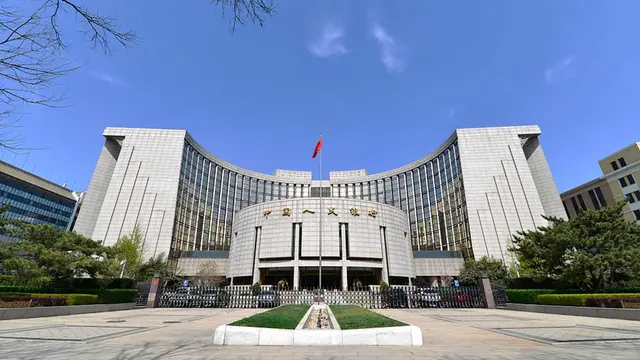The reserve requirement ratio (RRR) for small- and medium-sized banks by People's Bank of China (PBOC) has been cut once again effective Wednesday.
The move will reduce the amount of cash that banks have to keep in reserve for small and midsize locally focused lenders and inject about 280 billion yuan (41.4 billion U.S. dollars) into the market. About 1,000 rural commercial banks will benefit from a cut of eight percent from previous ranging from 10 to 11.5 percent.
The cut was announced by PBOC on May 5 and will be implemented in three phases, giving the dates of May 15, June 17 and July 15.
The Chief strategist in Fullerton Research Jimmy Zhu believes the liquidity management will be the main policy tool in the second half of the year, projecting more policy measures to be given in the second half of year.
“A few signs have actually provided the room. First, we see the social aggregate financing rebound in the first four months. That gives us a signal that the domestic demand probably started to warm up. Second, we see the U.S. ten-year treasury yield actually down 20 basis points in the past three months but the China ten-year bond up 20 basis points. So the divergence of the yield gave PBOC room that in the second half of the year,” he said.
The PBOC has already delivered several RRR cuts since early 2018 and injected about 3.35 trillion yuan (488 billion U.S. dollars) through the cuts, each of them targeting at the real economy. Though this round of RRR reduction shows that the monetary policy will continue to support growth, especially the smaller companies that can rarely get loans from large commercial banks, there are still concerns over whether the money will be injected into the real economy.
Wang Dan, an economist with the Economist Intelligence Unit, explained that it is a disincentive for banks to issue the loans to small and micro firms, “because bankers are held lifetime accountable if they make bad loans.”
In terms of the interest rates that SMEs pay for the loan, Wang thinks the rate is too low. She said because when people look at the rate, they have to think about effective interest rate at the same time and due to the high risks of those SMEs, banks are conservative.
“If they can choose they won't be choosing those micro firms. Because the average life expectancy for micro firms in China is about a year and a half, so lending to them can guarantee the majority of the loans will go bad,” she said.
She also thinks the smaller commercial banks are not ready to identify the risky borrowers, mainly because they are understaffed and also their abilities to differentiate the risky one from the safe ones are not that great.
For the coming months, Wang will be closely tracking a few indicators, including “whether the projects, especially in the services sector which contains most of those smaller firms will start the construction on time.” Other indicators are consumption and the process of a trade deal between China and the U.S.
(CGTN)
 简体中文
简体中文

